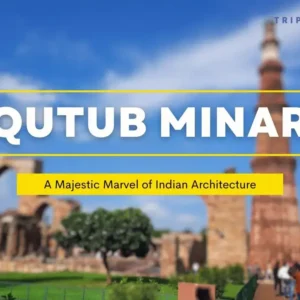Introduction
Hello! My name is Manoj Kumar, and I am thrilled to take you on a journey to explore the Hoysala Temples in Karnataka. These incredible temples, recently recognized as UNESCO World Heritage Sites, are more than just architectural wonders. Built centuries ago without cement, the stones were carefully interlocked to create sturdy and beautiful structures. This innovative technique not only ensured durability but also allowed for intricate carvings that tell fascinating stories of gods, legends, and daily life. Each carving narrates a tale, offering glimpses into mythology, history, and the daily lives of people from a bygone era. While exploring Karnataka, you might also want to visit Nandi Hills, a picturesque spot with a rich historical background. Let’s uncover the history, artistry, and significance of these timeless masterpieces.
The Hoysala Empire
The Hoysala Empire thrived in Karnataka between the 11th and 14th centuries. During this period, the rulers established a legacy of art and culture, leaving behind stunning temples that act as stone records of their era. The Hoysalas were not only accomplished rulers but also visionaries who recognized the importance of promoting artistic and literary growth. For instance, they supported the creation of literary works like “Vachanas” in Kannada and epics in Sanskrit, reflecting the cultural vibrancy of their era. Their temples are marvels of advanced engineering, showcasing their dedication to craftsmanship and their support for diverse communities, including Hindus and Jains.
The empire’s patronage extended to literature, particularly in Sanskrit and Kannada. Through inscriptions, we learn about their contributions to culture, governance, and religion. These temples symbolize unity, as they often celebrated religious harmony by incorporating elements from multiple faiths into their designs.
UNESCO Recognition

The Hoysala temples located in Belur, Halebidu, and Somnathpura have been added to UNESCO’s prestigious World Heritage list. This designation highlights their global cultural importance and ensures their preservation. Being placed alongside world-famous landmarks like the Taj Mahal and the Ajanta Caves, the Hoysala temples now receive global recognition as treasures of humanity. This acknowledgment not only secures their legacy but also brings international attention to Karnataka’s rich cultural history. If you are curious about other UNESCO-recognized landmarks, check out Qutub Minar, another architectural marvel of India.
This video by Times of India highlights India’s celebration of the Hoysala temples being recognized as a UNESCO World Heritage Site.
What Makes Hoysala Temples Special?
Unique Features
1. Soapstone Construction: The use of soft soapstone enabled artisans to carve intricate and detailed designs, achieving unparalleled finesse in their work. This flexibility was perfect for creating lifelike sculptures and elaborate motifs. The intricate carvings here remind visitors of the craftsmanship seen at Akshardham Temple in Delhi, showcasing India’s rich architectural heritage.



2. Star-Shaped Platforms: These innovative platforms provide structural stability and enhance the visual appeal of the temples. Their geometric precision reflects the advanced mathematical knowledge of the time. While the Hoysala temples have unique architectural features, the Lotus Temple in Delhi demonstrates how modern temples have embraced unique and innovative designs.



3. Intricate Carvings: The walls and pillars of the temples are adorned with elaborate carvings that depict gods, mythological tales, and scenes from everyday life. Each carving is a masterpiece, showcasing the unparalleled skill of the artisans.



Architectural Blend
While primarily inspired by Dravidian architecture, the Hoysala temples incorporate design elements from North and Central India, such as ornate shikharas (spires) seen in Nagara architecture and decorative friezes that echo the styles of the Chalukyas. This fusion adds a distinctive flair to their intricate designs. The balanced blend of regional influences demonstrates the Hoysalas’ openness to innovation and diversity.

Highlights:

Mantapa (Hall): These spacious halls serve as places of worship and community gatherings. Polished pillars and elaborately decorated ceilings make them visually striking.

Vimana (Sanctum): The sanctum is the most sacred part of the temple. Its towering spire, adorned with intricate carvings, symbolizes spiritual ascent and adds grandeur to the structure.
Famous and Hidden Gems
The Hoysala temples include well-known landmarks and lesser-explored treasures, offering something for every visitor.
Popular Temples:

Chennakeshava Temple (Belur): Renowned for its fine craftsmanship, this temple is dedicated to Lord Vishnu and took over a century to complete.

Hoysaleshwara Temple (Halebidu): Dedicated to Lord Shiva, this temple is celebrated for its exquisite sculptures and intricate friezes.

Kesava Temple (Somnathpura): A smaller but equally detailed masterpiece showcasing the artistic brilliance of the Hoysala period.
Hidden Gems:



- Lakshmi Narasimha Temple (Nuggehalli): Nestled in a tranquil setting, this temple is known for its serene atmosphere and detailed carvings.
- Sadashiva Temple (Arasikere): Its star-shaped layout and unique architectural elements make it a standout structure.
- Veer Narayana Temple (Belavadi): This temple is admired for its symmetrical design and stunning artistry.
- Lakshmi Devi Temple (Doddagaddavalli): As one of the earliest examples of Hoysala architecture, it features a unique star-shaped platform and multiple shrines.
Best Time to Visit
The ideal time to visit the Hoysala temples is between October and March, as the weather is cool and perfect for exploring. Additionally, several local festivals, like Makar Sankranti in January, add cultural richness to your visit. Monsoons (June to September) bring lush greenery, creating a picturesque setting, but occasional rains might require planning.
Tips for Visitors

Visiting the Hoysala temples can be a memorable experience, especially if you prepare well. Here are some tips to make the most of your trip:
- Plan Your Visit: Early mornings and late afternoons are ideal for capturing the temples in the best light, enhancing your photography.
- Hire a Guide: Knowledgeable local guides can enrich your experience with fascinating stories and cultural insights about the temples.
- Comfort Matters: Wear comfortable shoes, as temple grounds can be uneven, and carry water to stay hydrated during exploration.
- Respect the Temples: These are places of worship, so dress modestly and follow local customs.
Stories in Stone

Every Hoysala temple is a repository of stories etched in stone. For example, an inscription at the Chennakeshava Temple in Belur describes its construction in the 12th century, including details about the artisans and the king’s vision. These writings not only document the temple’s origins but also reveal the cultural and religious dynamics of the time. Inscriptions on the walls provide invaluable historical details, including the names of the builders, dates of construction, and the artisans who brought these masterpieces to life. These records also shed light on the political, social, and religious aspects of the Hoysala era. Exploring these inscriptions feels like stepping back in time and connecting with the people who created these wonders.
How to Reach

| Mode of Transport | Details |
| By Air | Mangalore Airport (168 km), Bangalore Airport (222 km) |
| By Train | Hassan Railway Station (33.6 km), Mysore Junction (141 km), Belur Railway Station (14.7 km) |
| By Road | From Belur (16 km), From Hassan (31 km), From Mysore (149 km) |
For those traveling in the northern parts of India, do not miss exploring Manali Tourism for its breathtaking landscapes and cultural experiences.
Other Attractions Nearby

While visiting the Hoysala temples, you can also explore other nearby attractions that reflect the region’s rich heritage and natural beauty:
- Kedareshwara Temple: Another stunning example of Hoysala architecture.
- Basadi Halli: A group of Jain temples showcasing beautiful designs and peaceful surroundings.
- Shravanabelagola: Famous for its massive statue of Lord Bahubali, this pilgrimage site offers both spiritual and historical significance.
- Gorur Dam: A tranquil spot surrounded by nature, ideal for relaxation.
If you are interested in Jain architecture, consider exploring the beautiful Adhi Vinayaka Temple for its unique cultural significance.
Hoysaleshwara Temple: Visual Journey to a UNESCO Heritage Site
Conclusion:
The Hoysala temples are more than architectural masterpieces—they are windows into a rich cultural and artistic past. These monuments are living testimony to the creativity, devotion, and craftsmanship of the Hoysala era. Visiting these sites is not just a journey through history; it’s an opportunity to experience the enduring beauty of art and culture. Whether you’re a history enthusiast, an art lover, or someone looking for inspiration, the Hoysala temples promise an unforgettable experience. Plan your visit and discover the magic of these UNESCO treasures!
FAQs about Hoysala Temples:
Various Hoysala kings, including King Vishnuvardhana, built the Hoysala temples during their rule in Karnataka, India.
The Hoysaleswara Temple shows off the Hoysala time through its beautiful building and detailed art.
The Hoysaleswara Temple in Halebidu, Karnataka, dedicates itself to Lord Shiva.
Hassan Railway Station, approximately 27 km away, is the nearest rail junction to Halebid, connecting major cities.
The closest domestic airport to Halebid is Mysore Airport, a three-hour drive away. For international travel, Kempegowda International Airport in Bangalore is the nearest option, about a four-hour drive.
Visitors should wear modest attire, such as shirts, trousers, dhotis, or pajamas with an upper cloth for men, and conservative clothing for women, covering shoulders and knees.
Yes, it’s possible to visit both Belur and Halebidu in one day, as they are located approximately 23 km apart.
Local specialties in Halebidu include Kesuvina Gantu, Kaayi kadabu, and Halasinakai Chutney, along with Continental, Mughlai, and Tandoori cuisines.
Girls should wear modest clothing covering shoulders and knees when visiting temples in India, avoiding short shorts or miniskirts.
Halebidu Temple complex welcomes visitors from 6:30 AM to 9:00 PM. Verify current timings before planning your visit.
Their intricate carvings, star-shaped platforms, and soapstone construction make them architectural marvels.
The Chennakeshava Temple in Belur, the Hoysaleshwara Temple in Halebidu, and the Kesava Temple in Somnathpura are the most well-known.
The best time is between October and March for pleasant weather.
Yes, guided tours are widely available and highly recommended for a deeper understanding of the temples.
References:
- UNESCO World Heritage Centre
Sacred Ensembles of the Hoysalas. Retrieved from UNESCO.org - Indian Culture – Ministry of Culture, Government of India
Sacred Ensembles of the Hoysalas. Retrieved from IndianCulture.gov.in - Drishti IAS
Hoysala Temples: India’s 42nd World Heritage Site. Retrieved from DrishtiIAS.com - The Times of India
UNESCO Approves Hoysala Temples of Karnataka as New World Heritage Sites. Retrieved from TimesofIndia.IndiaTimes.com - Wikipedia
Sacred Ensembles of the Hoysalas. Retrieved from Wikipedia.org





